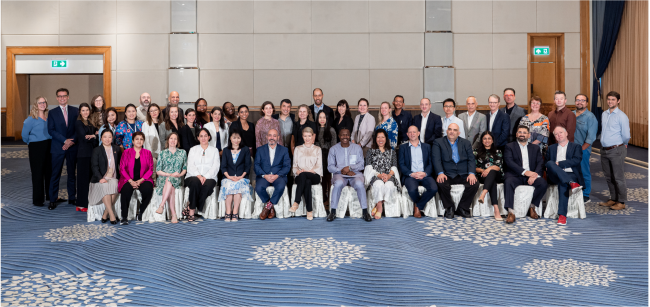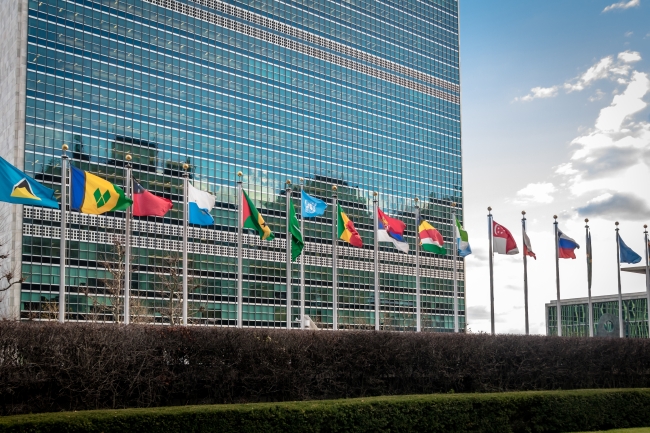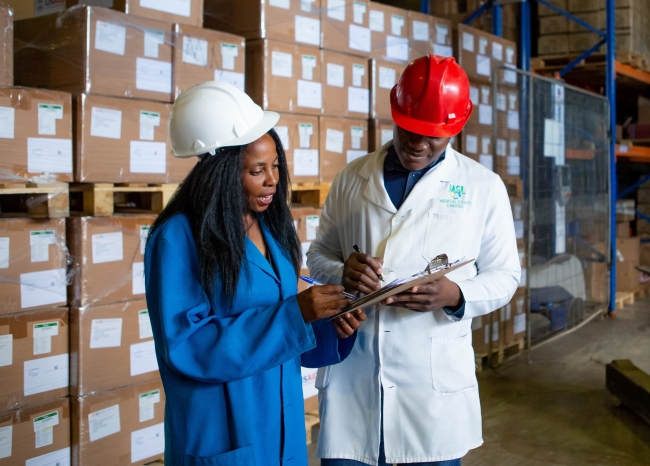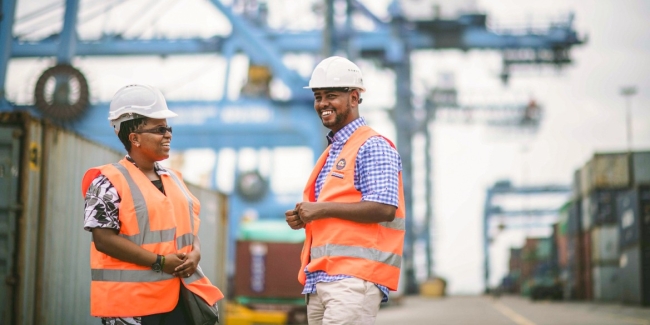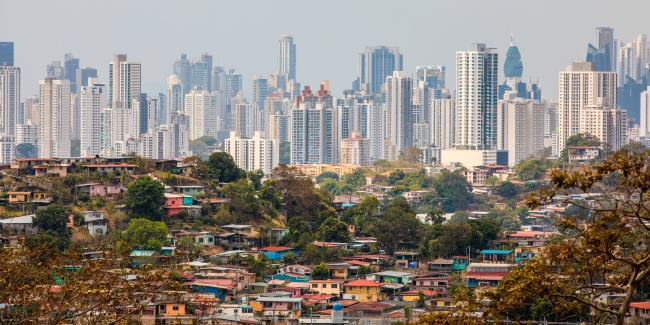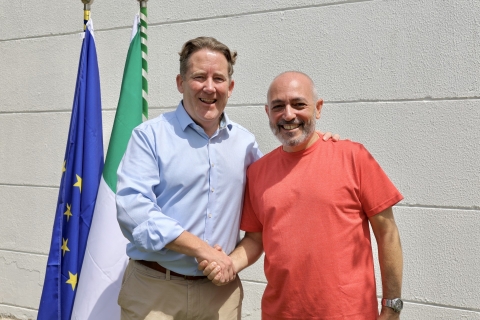Attracting Climate Finance to Africa Through the Development of Bankable Project Pipelines
11 NOVEMBER, 2024

Africa stands at a pivotal moment with the potential to leapfrog into a future where it is able to deal effectively with the climate crisis. Although the continent contributes less than 4% to global greenhouse gas emissions, it is among the most vulnerable to climate change, grappling with challenges like extreme weather, food insecurity, and energy poverty. To unlock Africa's energy potential and foster sustainable development, finance is crucial. However, attracting climate finance in African countries has been a challenge.
Several factors contribute to this, including a high debt burden, economic challenges, and competing budgetary demands, which limit available funds for climate initiatives. Furthermore, local private sector investment remains low due to the perceived risks of long-term returns, making it difficult for these countries to secure the necessary funding for climate mitigation and adaptation efforts.
Consequently, there is a general understanding globally that wealthier, high-emitting countries have a duty to support developing nations in their climate adaptation and transition efforts. However, this commitment has not been followed by sufficient, concrete action, with less than 3% of global climate finance going to African countries in the last few years. An example of this lack of action is the initial failure to meet the 100-billion-dollar pledge by its original goal date. Much of this stems from the perceptions of high risks by foreign capital providers to invest in Africa, despite the vast opportunities for climate-related projects. Risks such as political and economic instability, weak infrastructure, and currency devaluation are some of the top concerns for investors. In addition, long-term climate projects often require substantial upfront capital, and with challenges like currency volatility and debt distress, foreign investments remain low.
While there are several ways to address this shortage of financial investments, developing a pipeline of bankable projects can impact the inflow of more finance into the continent to accelerate climate action and energy transition efforts ongoing on the continent. As there is no one-size-fits-all definition of “bankable”, projects are commonly termed “bankable” if lenders are willing to finance them, with the exact definition that can vary depending on the requirements of each financier. Commercial lenders consider the risk profile and offer better loan terms for projects with higher bankability. Donors and development partners focus on social and developmental impacts, prioritizing projects that align with goals like poverty reduction, gender equality, or environmental sustainability. International Finance Institutions (IFIs) consider both financial viability and social impacts, supporting projects that align with their objectives, such as building regional infrastructure or trade corridors.
Against this backdrop, a low-carbon and climate-aligned bankable project pipeline is described as a set of (prospective) projects and assets that are supportive of long-term climate and development goals constituting a sequence of proposed investment opportunities (OECD, 2018). In essence, the development of a project pipeline helps overcome the shortage of ready-to-invest projects and reduces the cost of preparing such portfolios.
Building a strong pipeline of bankable climate-focused projects demands collaboration among key stakeholders, national and subnational government agencies, development partners like UNDP, financiers such as Development Finance Institutions (DFIs), international and local banks, insurance companies, and project developers. The process involves several stages outlined below:
Project Origination: The process begins with defining objectives and key sectors that align with national priorities and setting eligibility criteria that correspond with donor requirements. Thereafter, market research is conducted to identify risks, opportunities, and regulations influencing project feasibility and financing, leveraging tools like UNDP SDG Investor Maps when available. In addition, stakeholders like governments and project developers are engaged to scout and evaluate promising projects, organizing them by financial instruments and organization types. Finally, projects are classified by maturity—Ideation, Development, Financing, and Implementation— to assess their readiness and need for further support.
Project Enhancement: Identify the necessary steps for a project to achieve bankability, such as conducting feasibility studies, building capacity, enhancing environmental and social safeguards, addressing foreign exchange risks, and developing a solid financial structure. Engaging technical assistance partners like the UNDP can be effective at this stage and help boost financier confidence.
Investment Mobilization: Engage relevant financiers to secure long-term funding through a mix of grants, equity, debt, and guarantees based on the project’s financial structure. Funding sources may include development partners, DFIs, multilateral banks, private institutions, governments, NGOs. UNDP, while not being a financial institution itself, can assist in facilitating the engagement of the various stakeholders, and in tracking project progress and implementation post-funding.
Project developers and organizations working on climate action can utilize this approach of creating a bankable project pipeline to seek investments for their projects. This process can help to ensure the efficient allocation of financial, human, and technical resources, maximizing project success. It also helps manage risks by advancing multiple projects simultaneously, so if one falters, others in the pipeline can continue. Moreover, a diverse pipeline fosters diverse innovative solutions (such as solar, wind, and geothermal projects in the energy sector, enhancing energy security and resilience; or climate adaptation projects in different sectors or stages of the value chain). Above all, a well-structured pipeline with a visible outcome boosts investor confidence, thereby attracting funding and access to public and private financing, crucial for climate and clean energy initiatives.
As a development partner, UNDP serves as a bridge between project owners and investors. Recognized as a trusted, neutral advisor to governments and organizations in implementing countries, it has a unique role in convening stakeholders. With a deep understanding of local conditions, priorities, and challenges specific to each country or market, UNDP can effectively build a strong case for investment and provide valuable insights to capital providers. Additionally, UNDP’s expertise in international standards—covering climate goals, impact assessments, social and environmental benchmarks, and financial requirements—helps to strengthen projects and reassure investors.
UNDP’s expertise is also noticeable through its annual Africa Investments Insights Report. The report, informed by the SDG Africa Investor Maps available on the SDG Investor Platform, highlights opportunities for private sector partners to leverage data to achieve impactful climate investments. To date, the platform has identified over 600 investment opportunities in 45 markets, highlighting private sector potential for sustainable development and project pipeline building. In Africa, SDG Investor Maps reveal 207 opportunities across 11 sectors and 42 industries, with over half being climate focused.
A concrete example of how UNDP works to build climate project pipelines is through the activities of the UNDP Rome Centre, which runs two programmes (Energy for Growth and PISTA - the Platform for Investment Support and Technical Assistance) that contribute to climate action and energy transition in several African countries. The Centre does this by identifying climate-oriented projects and linking the project developers to interested donors and financiers. It also provides technical assistance to climate-friendly projects to bring them to bankability and thereby attracting the needed funding to implement and scale their projects.
You can interact with the work of UNDP Rome Centre here.

